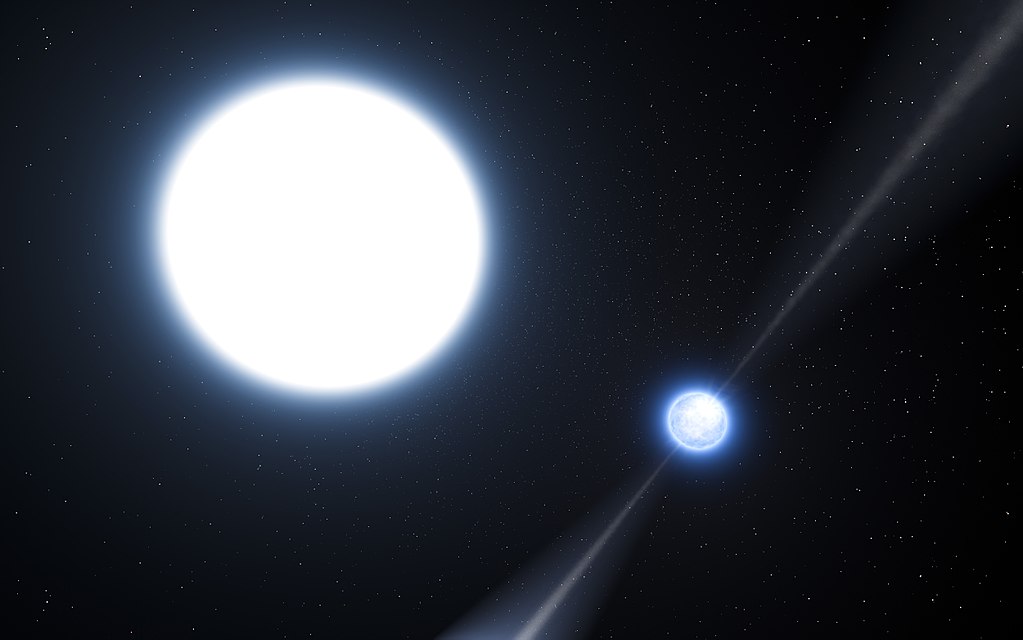
The mystery of the presence of heavy metal elements (silicon, magnesium and calcium) on the surface of many white dwarfs, which contradicts the laws of physics, was solved by specialists from JILA, one of the leading American research institutes in the field of physics. sciences, the JILA press service reported on May 3.
White dwarfs are the final evolutionary state of stars that are not massive enough to become a neutron star or black hole, whose core collapses into a dense ball similar in size to Earth but with the mass of our Sun. These white dwarfs make up 97% of the stars in our galaxy, but the chemical composition of these stellar remains has been a mystery to astronomers for many years.
JILA graduate student Tatsuya Akiba explained what kind of mystery we are talking about: “We know that if these heavy metals hit the surface of a white dwarf, then the white dwarf is quite dense, so these heavy metals should sink very quickly to the core. “Therefore, you should not see any metal on the surface of a white dwarf unless the white dwarf is actively eating something.”.
It is true that white dwarfs can attract various nearby objects, such as comets or asteroids (also known as planetesimals), but the details of such a process have not yet been fully understood. However, researchers decided that this may be the key to solving this mystery: metals on the surface of a white dwarf.
The study, which included Akiba, a JILA postdoctoral fellow, University of Colorado Boulder astrophysical and planetary sciences professor Anne-Marie Madigan, and undergraduate student Sela McIntyre, believe it has revealed the reason why White dwarfs “eat” their closest planetesimals.
The results of the study were presented in the paper “Tidal disruption of planetesimals from an eccentric debris disk generated by a white dwarf collision,” published in The Astrophysical Journal Letters.
Scientists performed computer simulations of the dynamics of a white dwarf, which at the time of its formation received a boost caused by an asymmetric loss of mass, changing its motion and the dynamics of all surrounding matter.
In 80 percent of the model tests, the researchers observed that the thrust caused the orbits of comets and asteroids between 30 and 240 astronomical units from the white dwarf to elongate and align. In addition, about 40% of the subsequently “eaten” planetesimals had retrograde orbits (that is, they rotated in the opposite direction to the dwarf’s rotation).
The researchers extended their model to capture the dynamics of the white dwarf 100 million years from now. It turned out that the planetesimals closest to the white dwarf still have elongated orbits and move as a single unit, something that has never been observed before.
“This is what I think is unique about our theory: we can explain why, why accretion events take so longMadigan says. — “Although other mechanisms could explain the initial accretion event, our thrust simulations show why it is still continuing hundreds of millions of years later.”.
(Accretion is the capture of matter from the surrounding space by the gravitational field of a celestial body, followed by the fall of part of this matter onto the surface of this body.)
These results also explain why heavy metals are found on the surface of a white dwarf: the white dwarf constantly absorbs smaller objects in its path.
“The simulations helped us understand the dynamics of various astrophysical objects”says Akiba. The researchers hope to expand their models for future projects to study how white dwarfs interact with larger planets and learn more about white dwarf formation, which is important for understanding how star systems change over millions of years.
They will also help shed light on the origin and future evolution of our solar system. “The vast majority of planets in the Universe will end up orbiting a white dwarf.”Madigan says. — It could be that 50% of these systems are devoured by their star, including our own Solar System. “Now we have a mechanism to explain why this will happen.”.
Source: Rossa Primavera
I am Michael Melvin, an experienced news writer with a passion for uncovering stories and bringing them to the public. I have been working in the news industry for over five years now, and my work has been published on multiple websites. As an author at 24 News Reporters, I cover world section of current events stories that are both informative and captivating to read.
